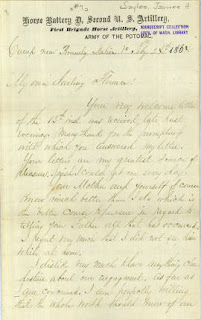Some of the most interesting and
under the radar inventions have been able to change the world as we know it
today. One of those inventions is barbed wire. Barbed wire has shaped our world
as we know it today and history long before. Without barbed wire our farmers
and countryside’s would have been changed drastically throughout time. Barbed
wire did not only effect the open range but it also pushed for change in all
areas of frontier living.
Giddens played an influential role
in the production and design of barbed wire as we know it today. Giddens was
not the first to come up with barbed wire, but his design was by far the most
successful. Giddens was successful because of the patent that he received from
the U.S. Government and the quick and reliable ability of mass production. Giddens
wire is the cheapest, strongest, and most durable barbed wire that there is
available to date. The wire was influential because it was able to successfully
hold in cattle, exhaust no soil, did not shade vegetation, and did not make
snowdrifts. Barbed wire was easily advertised for the time period. It was known
as “The Greatest Discovery of the Age”, and Gates described his wire as “lighter
than air, stronger than whiskey, and cheaper than dust.”
Barbed wire played a major role in
helping to progress and expand the Homestead Act. The Homestead Act allowed any
and all citizens to claim up to 160 acres of land (includes women and freed
slaves). The new settlers needed a way to contain their cattle and livestock so
that the vegetation was not destroyed and cattle could not escape. Without
barbed wire the Homestead Act would not have been able to be as successful as
it had been because of the security and cost challenges that would have risen
for the new farmers in the area.
Barbed wire contributed to the end
of the “open range.” Before barbed wire, the Great Plains were wide, expansive,
grand, free, and unrestricted. With the new invention of barbed wire, all of
that soon changed. The Plains were now restricted, blocked off, and unavailable
for roamers of any kind. Traditionally, fences were used by farmers to contain
their cattle, but in the 1800’s Texas changed this when they pioneered into
barbed wire. This new invention lead to a dramatic change from free and open
plains to blocked off and a “land of fences.” Land encountered in the mid-late
19th century was vast and expansive, without trees, fences, stones,
or walls to interrupt an adventure in the West. Over many decades this once
free and wild west turned into a land of divisions and separation all marked by
the barbed wire fencing. Barbed wire soon gained legislation back up to defend
against the oncoming attacks from Natives and Cowboys, which lead to the
victory of barbed wire in the frontier.
With the changes to the once free
and open range, natives and cowboys were not happy. The Native Americans gave
the barbed wire a nickname, “The Devil’s Rope.” Cowboys also resented the change
because it was prohibiting them from making long treks to railroads and doing
what they were originally making a lifestyle out of. All of this came to a head
when the “Fence-Cutting Wars” began to outbreak. Cowboys and Natives would go
out and cut the barbed wire fencing while hunting or directing their heard. Masked
gangs known as the Blue Devils and Javelins would cause violence and death with
their shootouts. The philosophical debate took place while all of this violence
was happening surrounding barbed wire. John Locke was one of the main contributors
to the idea that you owe the work that you do, so if you work on your land then
that land should legally be yours. Kansas was the first state to declare what
came to be known as a “legal” fence with the new Kansas Fence Laws.
Barbed wire did not only effect the
open range but it also pushed for change in all areas of frontier living. Barbed
wire played a major role in the changing and shaping of our Western Frontier and
without it the West would not be the same. Although, not everyone accepted the
new changes that barbed wire presented, it ultimately won the legal war with
legislation and government backing. Barbed wire was a major invention that took
people by surprise at just how fast it was able to expand and soon contain the Western
Frontier.
 |
| This is the patent application submitted by Giddens for his barbed wire design. |
 |
| This is an image of the many different barbed wire designs with dates and names. |
 |
| This is an image showing the tensions that arose from barbed wire fencing. |
Sources



















